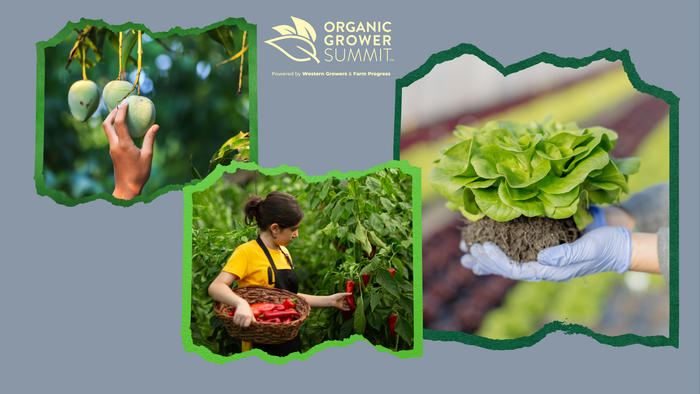E-grocery sales growth slows, but expected to be significant by 2028
Post-pandemic predictions of stronger grocery e-commerce sales were premature, but retailers should continue click-and-collect, delivery services. Get the latest data.
June 18, 2024

At a Glance
- Online grocery sales account for about 11% of all grocery retail sales, according to Brick Meets Click.
- Online grocery sales are expected to rise three times faster than brick-and-mortar grocery sales through 2028.
Back in 2020, as the COVID-19 pandemic was just starting its global shakeup, the U.S. grocery industry transformed seemingly overnight. Suddenly, legions of consumers who’d never before bought groceries online began forgoing store visits in favor of curbside pickup or at-home delivery.
Brick-and-mortar retailers scrambled to keep up with demand, often building up their click-and-collect and delivery infrastructures on the fly.
At the time, many analysts predicted a good shake of shoppers would stick with grocery e-commerce long after the pandemic ended. They theorized that consumers who had experienced easy, timesaving, online ordering would have little incentive to resume in-store shopping.
This reasoning fueled some bold projections about e-grocery’s continued growth and future market share. In September 2020, grocery-focused digital commerce solutions provider Mercatus predicted that by 2025, online grocery sales would account for 21.5% of total grocery sales in the U.S. That estimate would equate to $250 billion, roughly 60% higher than pre-pandemic sales projections for 2025.
Well, we’re already halfway through 2024, and e-grocery sales aren’t anywhere near $250 billion. Nor do they account for the expected one-fifth of total grocery sales. Instead, online grocery sales make up about 11% of the market, Brick Meets Click reports.
Even four years from now, e-commerce grocery sales is predicted to reach an estimated $120 billion, according to Brick Meets Click’s recently published U.S. eGrocery Sales Forecast: 2024 to 2028, sponsored by Mercatus. That tally would give online grocery 12.7% of the total market. And if you subtract ship-to-home sales (Amazon Fresh, etc.) and look just at grocers’ pickup and delivery revenue, then online sales represent only 10.7% of the overall grocery market.
Clearly, shoppers have not abandoned brick-and-mortar.

A grocery employee delivers a click-and-collect order to a consumer waiting in her car. Credit: Brookshire Grocery Co.
E-commerce still a growth engine
While e-grocery may not be the behemoth many thought it would be by now, it’s still a vital and growing sector that all brick-and-mortars should pay attention to. This includes independent natural products retailers, whether or not they currently provide click-and-collect, in-house delivery or contracted delivery through Instacart or another third party.
Total grocery sales—both in-store and e-commerce—are expected to chart a compound annual growth rate (CAGR) of 1.6% through 2028, according to Brick Meets Click. That’s a hefty decline from the 5.6% growth logged between 2019 and 2023.
Like the larger grocery market, e-commerce grocery is also expected to grow much more slowly through 2028 than it did leading up to 2023, which makes sense considering inflation’s impact and the online grocery market’s maturation. For the e-commerce grocery sector, Brick Meets Click forecasts a CAGR of 4.5% over the next four years.
But here’s the thing: While growth of 4.5% is a considerable drop from online grocery’s double-digit expansion during the pandemic, it’s more than three times the 1.3% growth predicted for in-store sales through 2028.
This is valuable intel for brick-and-mortar grocers to know, as it suggests that their curbside pickup and delivery services will drive significantly more revenue growth in the coming years than their in-store sales will. In other words, by Brick Meets Click’s calculations, grocers’ e-commerce solutions will be their best growth engines.
Pickup sticks
Among the three e-commerce categories tracked by Brick Meets Click—pickup, delivery and ship-to-home—pickup is proving to be the preferred service of shoppers. Many discovered its convenience during the pandemic and haven’t turned back; other consumers have begun utilizing it more recently.
Brick Meets Click predicts that pickup sales will grow 5.4% over the next four years, whereas delivery is expected to expand 4.4% and ship-to-home just 2.8% By the end of 2028, pickup should account for almost 47% of all e-commerce grocery sales.
One factor fueling this growth, according to Brick Meets Click, will be the steadily increasing availability of curbside pickup services. Right now, many brick-and-mortars offer delivery through contracted third parties like Instacart, Door Dash or Uber Eats, but they don’t provide click-and-collect—or if they do, it’s very limited. As demand for curbside pickup continues growing, more and more grocers are expected to launch or expand these services to meet the market need.
Other notable findings
As the online grocery sector has matured, it has become more challenging to expand the active user base, Brick Meets Click reports. Therefore, increasing order frequency among existing users will be the most significant driver of e-commerce grocery sales through 2028.
Also, because repeat customers typically spend more money per shop than first-timers, getting more recurring customers in the mix should help retailers generate higher average order values, aka bigger basket sizes.
Brick Meets Click also predicts that a slower-growth online market will compel more brick-and-mortar grocers to launch or expand in-house e-commerce solutions. By handling delivery or click-and-collect on their own, versus contracting a third party, retailers can better control operating costs and customer experiences.
They can often save shoppers money, too. Per the report, a basket of groceries purchased on a first-party platform is, on average, 9% cheaper than comparable groceries bought from a third-party platform, excluding charges, fees and tips.
About the Author
You May Also Like



.jpg?width=700&auto=webp&quality=80&disable=upscale)
